Yale’s scientific glassblowers, Daryl and Preston Smith, have been giving amazing lampworking demonstrations to Peabody Museum staff! They kindly offered to do so after we approached them about contributing to our new exhibition gallery for the History of Science and Technology collection.
Daryl and Preston, who are father and son, make glassware for 17 departments at Yale. They also supply other universities including Vanderbilt, NYU, and Stonybrook as well as businesses and artists across the United States.
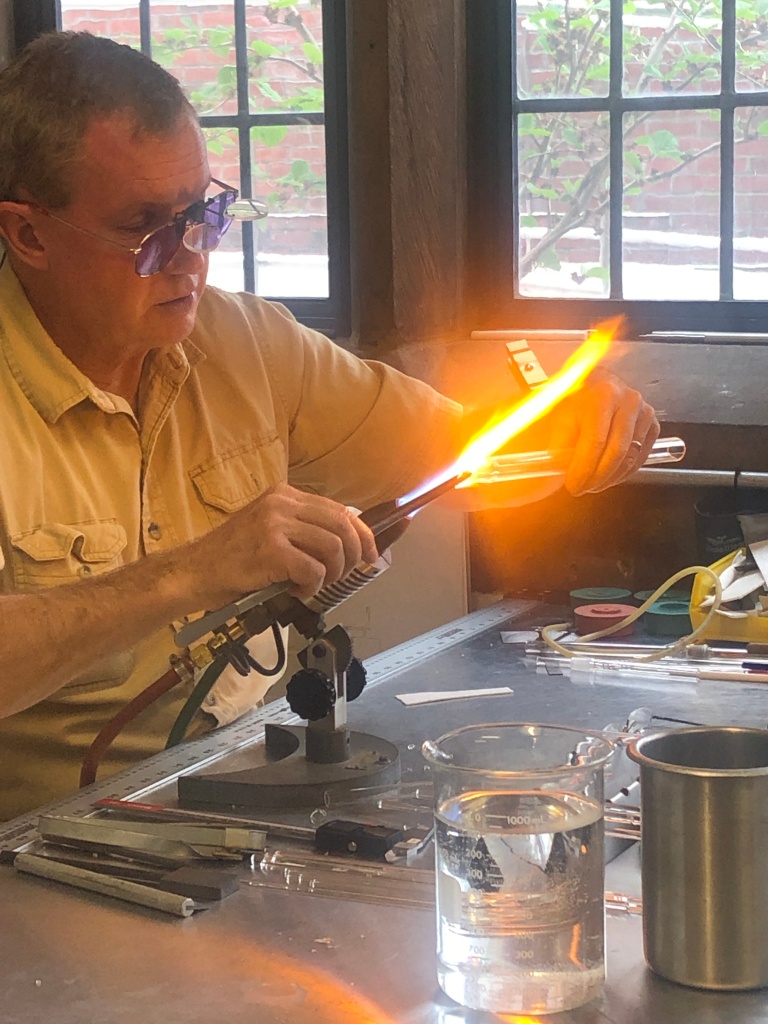


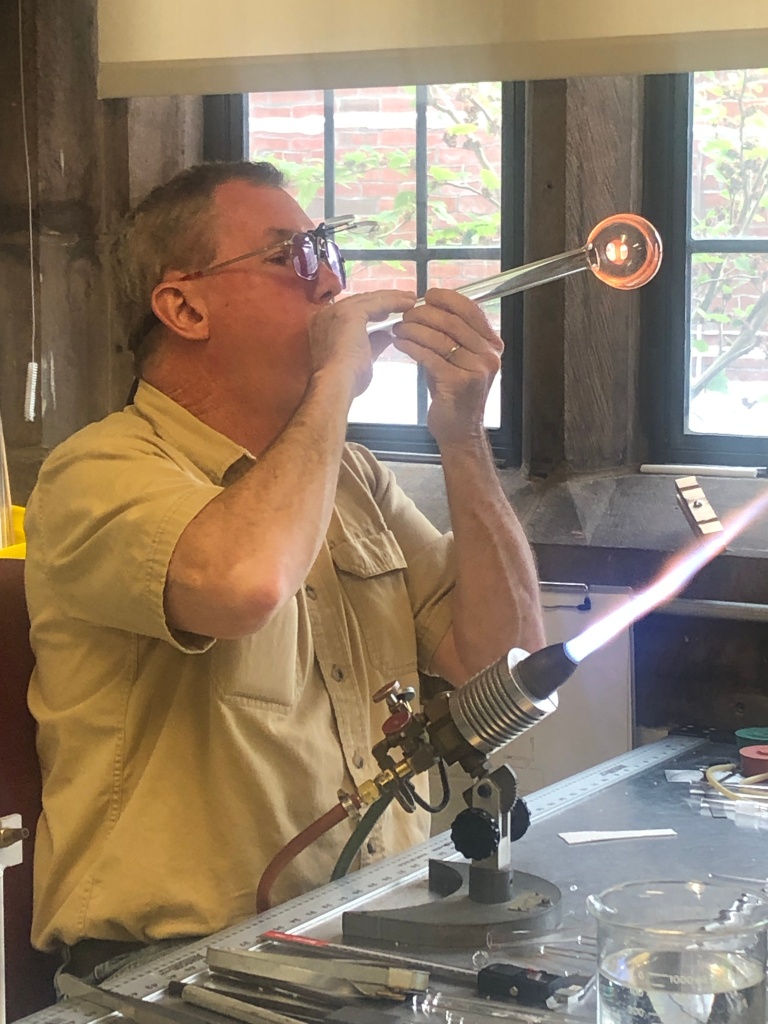


Daryl originally worked in aquaculture before doing a unique degree in scientific glassmaking at Salem Community College, followed by an 8,000-hour apprenticeship. You can read more about his background in glassmaking here. He became Yale’s full-time scientific glassmaker in 2005, and Preston later joined him after doing a degree in mathematics, completing his own apprenticeship at Yale.
Daryl’s motto is, “If not for glass, science would be blind” – in recognition of the many ways that glass has been central to scientific apparatus over the centuries. Our own collection is full of all kinds of glass components including lenses, mirrors, filters, images, electrical insulators, and vessels and plates for containing or excluding or protecting.
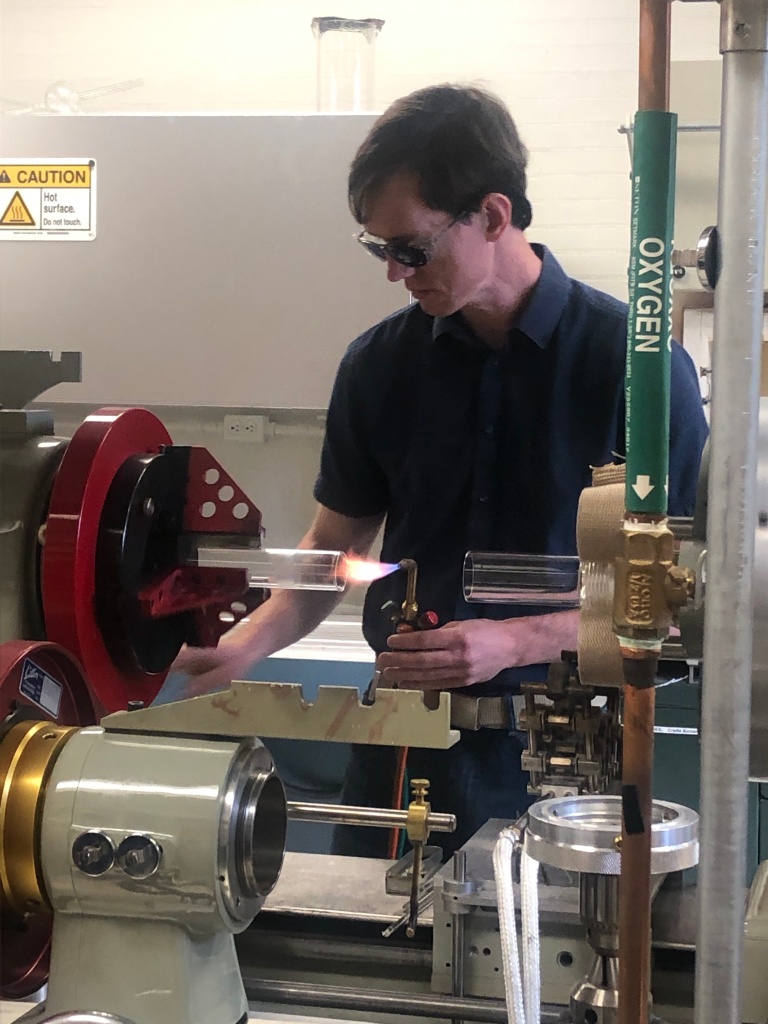
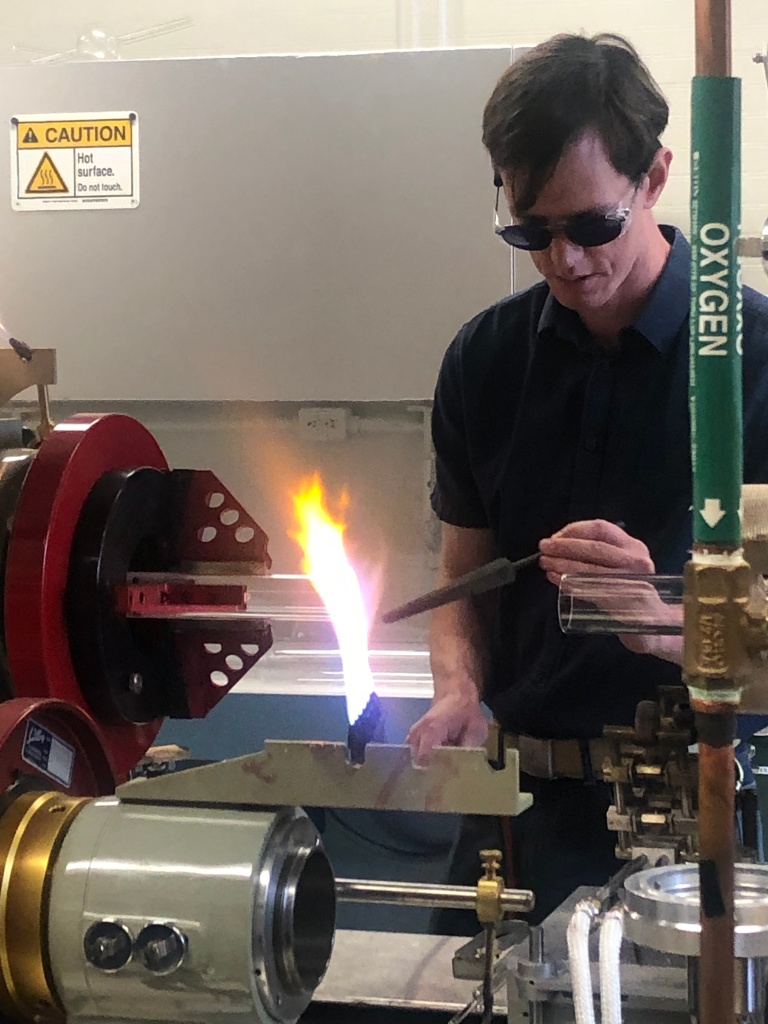
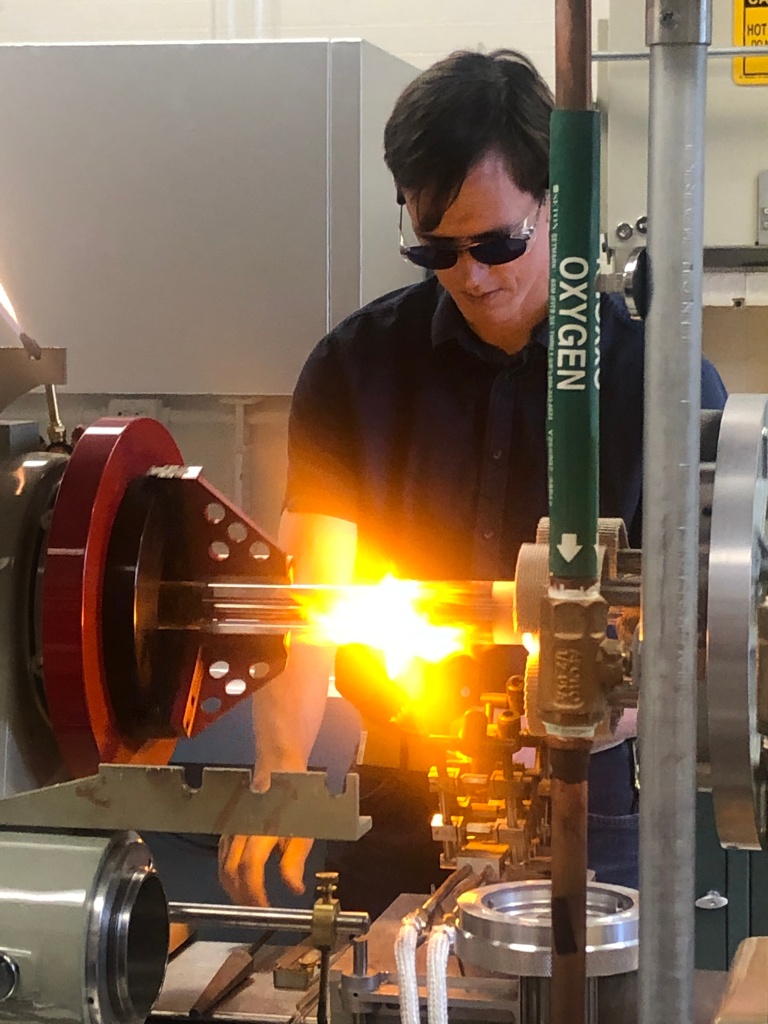
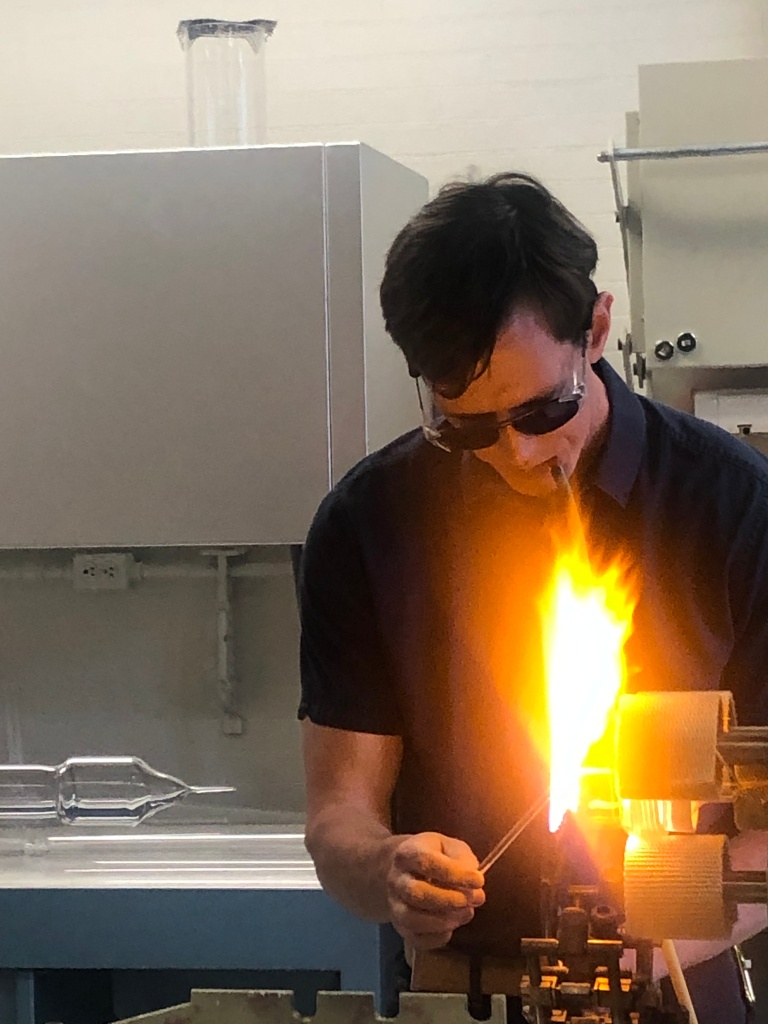
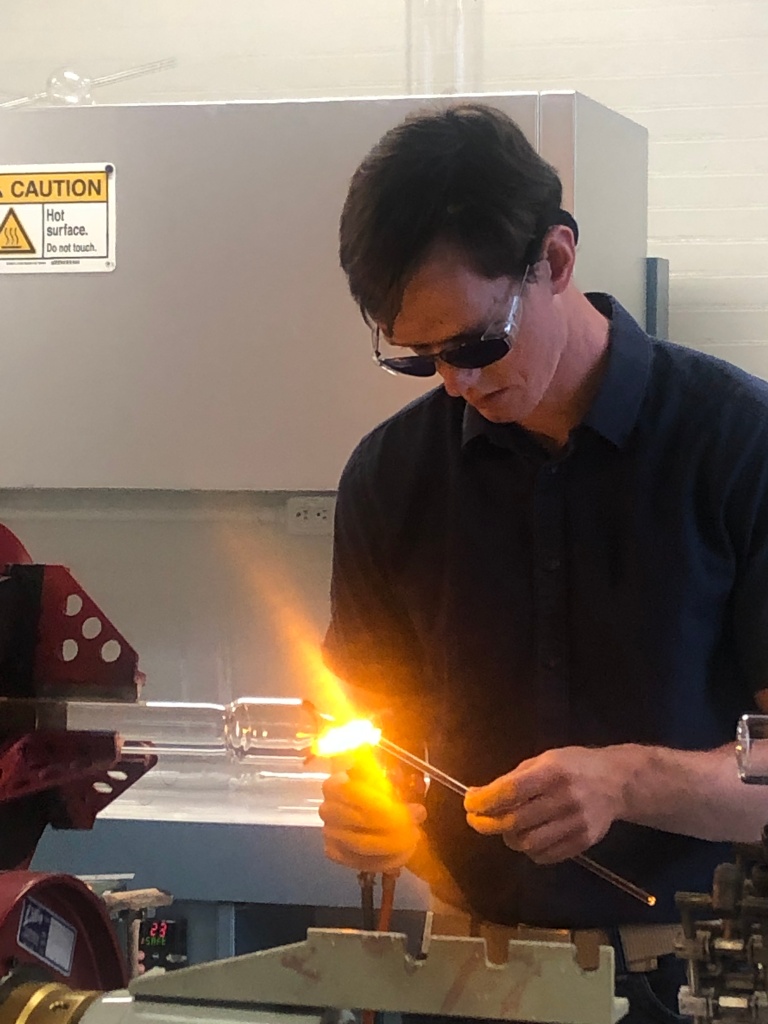
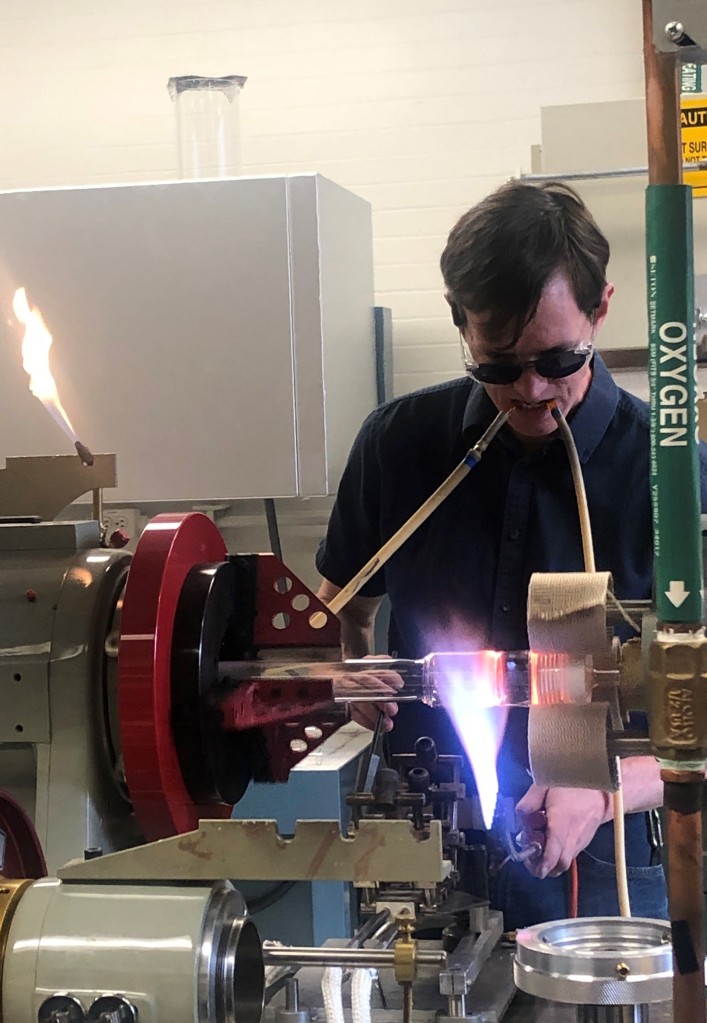
Daryl and Preston use blowtorches, handheld tools, and machines including lathes and ovens to reshape and to fuse together glass components. “Glass is an amorphous solid. When it goes from liquid phase back to solid phase, it doesn’t form a rigid crystalline structure,” Daryl explains. When he or Preston combine components, “they become in essence one piece of glass – physically, structurally, and molecularly.”
The glassblowers work at temperatures which can exceed 3,000 degrees Fahrenheit. After so many years of experience, they know what is happening by sight and feel rather than by consulting instruments like thermometers. They use tools made of materials like graphite, which won’t melt or stick to the hot glass, and sometimes attach “cold sticks” to act as temporary handles while working the glass. After lampworking, the pieces go into an oven at more than 1,100 degrees Fahrenheit to eliminate thermal strain.



Daryl and Preston often work closely with researchers and students to design glassware tailored to their specific needs. For example, they designed a vessel in which researchers at the Yale Medical School could grow new human veins for transplants with lower rejection rates.
They are currently working on 50 copies of a glass vessel for the University of Connecticut, into which they seal samples of different materials for accelerated tests of environmental weathering. Some have electrical components on the side. Each takes about an hour to make including preparations.

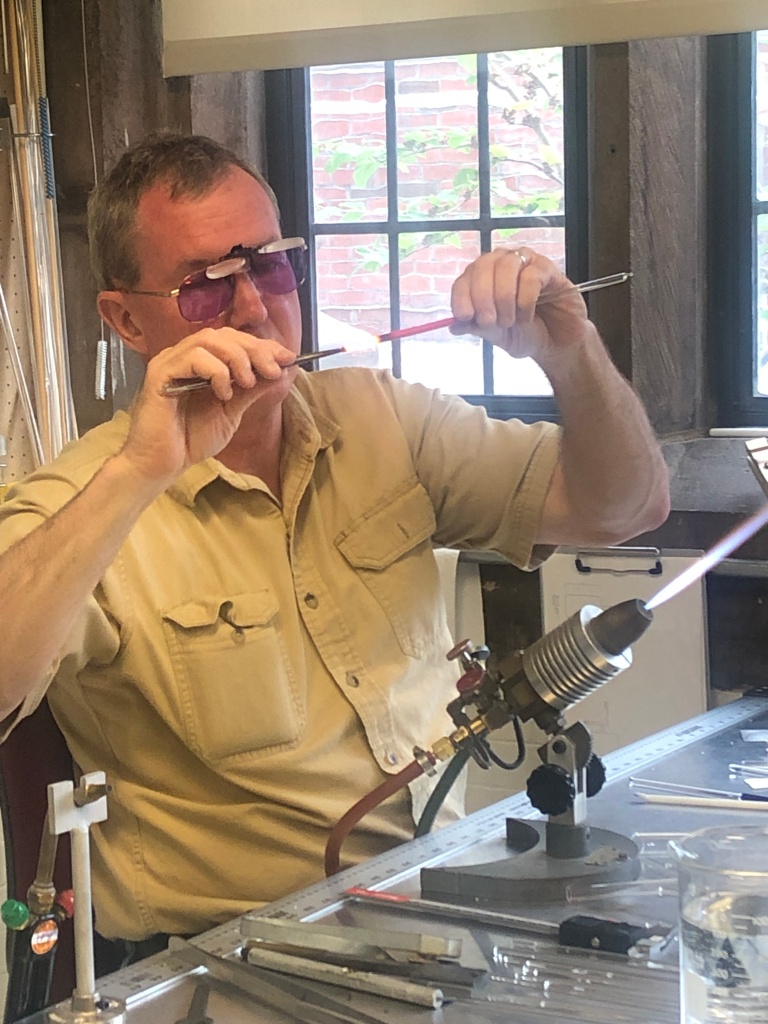


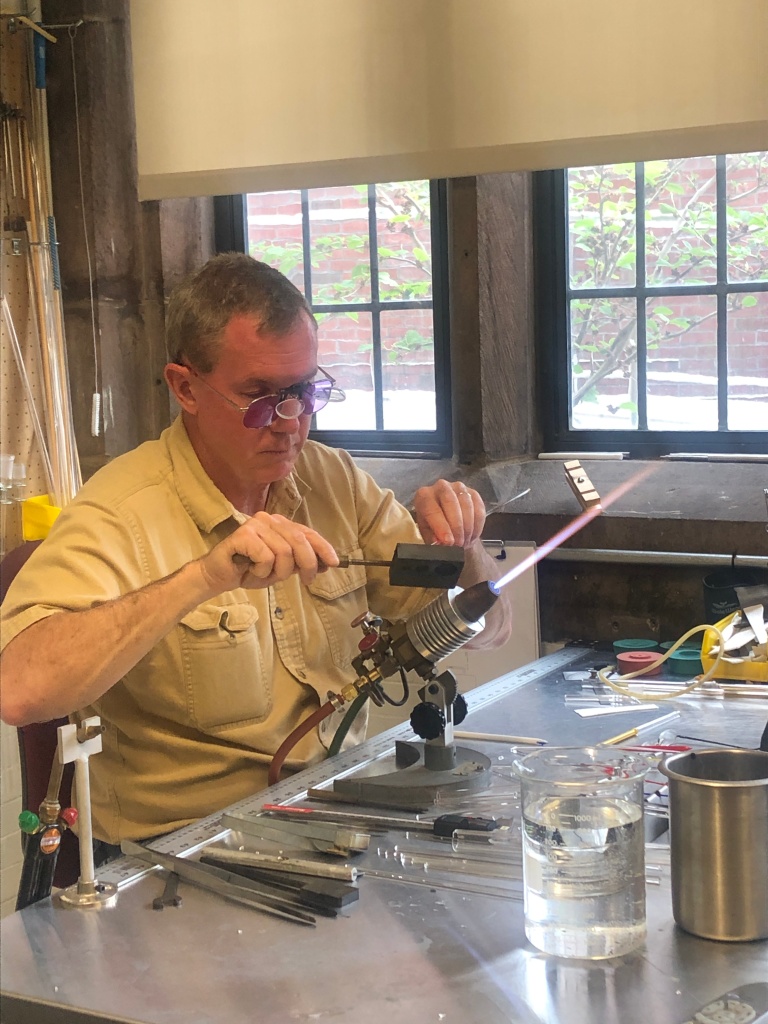

In addition to working with researchers, Daryl teaches a Scientific Glassblowing course for Yale students. He says that it can be therapeutic for them, because it is so different from their normal coursework.
One of the first things which the student glassblowers often make is a swirling marble. They might not be able to make them perfectly spherical at first – but that has the side effect of keeping the students safer, because asymmetrical marbles are less likely to roll off of the bench while blazing hot!

Yale departments sometimes ask Preston and Daryl to craft gifts for visiting speakers, too, like this goblet with an ornate multicolor stem in the early modern style.
The Peabody staff to whom the Yale glassblowers gave lampworking demonstrations were excited to receive their own gifts as well, with each person receiving a glass stirring rod made in the workshop. “You can stir your chemical concoction or beverage of choice!”, Preston quipped.
